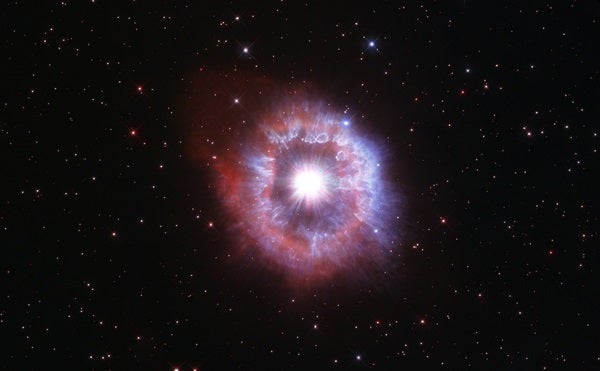AG Carinae shines with the brilliance of 1 million Suns, making it one of the brightest stars in the Milky Way. But that brilliance doesn’t come without its costs. The star is burning through its fuel at a rapid pace, causing it to erupt in fits and throw its outer layers into space. One or more past eruptions 10,000 years ago created the beautiful expanding shell of dust and gas captured in this Hubble image, taken to celebrate the space telescope’s 31st anniversary.
While these kinds of outbursts are typical for stars like AG Carinae — known as luminous blue variable stars — such stars are rare. Researchers have only found 50 luminous blue variables in our Local Group of galaxies.
Luminous blue variable stars live life in the fast lane, glamming up the galaxy for only a few million years before burning out. For comparison, the Sun’s lifetime is estimated at 10 billion years. The kinds of outbursts like the one seen above occur when the star is in danger of self-destructing. Gravity and light are constantly at war in these stars: Gravity pulls the outer material inward, while radiation pressure — the force of escaping photons — pushes it back out. This causes the star to expand or contract. When the outward pressure wins, the star balloons outward, putting it at risk of a gravity backlash that would result in a life-ending supernova. But like a volcano, the star can postpone its final eruption with a smaller one. After blowing off its outer layers, the star returns to its normal size and becomes inactive for a while — until its internal struggle flares up again.










